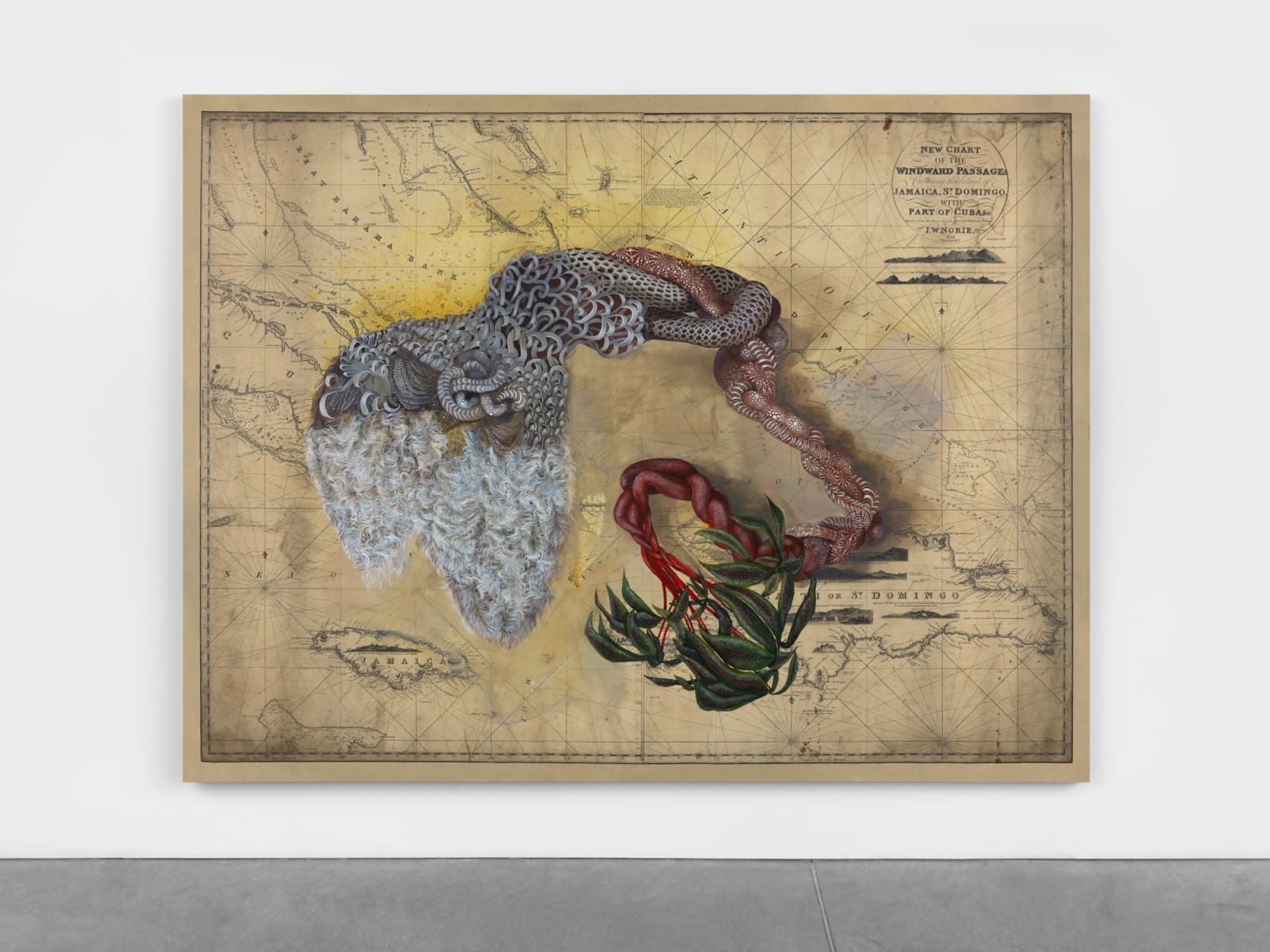-
Artworks
 Photo: Phoebe d'Heurle.
Photo: Phoebe d'Heurle.
 Photo: Phoebe d'Heurle.
Photo: Phoebe d'Heurle.
 Photo: Phoebe d'Heurle.
Photo: Phoebe d'Heurle.
 Photo: Phoebe d'Heurle.
Photo: Phoebe d'Heurle.
 Photo: Phoebe d'Heurle.
Photo: Phoebe d'Heurle.
Untitled (Anacaona), 2020
Oil and acrylic on printed canvas96 3/8 x 127 3/8 in
244.6 x 323.5 cmSoldFurther images
The figure in this work intervenes onto the surface of a map from 1846 entitled “A New Chart of the Windward Passages Containing the Islands of Jamaica, St. Domingo, with...The figure in this work intervenes onto the surface of a map from 1846 entitled “A New Chart of the Windward Passages Containing the Islands of Jamaica, St. Domingo, with Part of Cuba,” which describes the navigation of the Caribbean region. Becoming a connective force amongst the islands, the central burning figure represents Anacaona, the Taíno cacique who was famously killed by Spanish conquistadors. Haitians and Dominicans consider her a hero of a shared struggle against colonialism, and an emblem of independence. Here, her form draws reference to wide-ranging symbols of healing and resistance, including effigies popularly burnt on New Year’s Eve in Cuba and other Latin American countries to dispel the bad things that have happened in the past year.Exhibitions
James Cohan Tribeca, Firelei Báez, March 8 - April 25, 2020Literature
Cosmo Whyte, "The Poetics of Opacity," Art Papers, Spring 2021. P12.Publications
Golden, T., Respini, E., Godfrey, M., Acevedo-Yates, C., & Russell, L. (2022). Firelei Báez: To breathe full and free (D. Norr, Ed.). New York, NY: Gregory R. Miller & Co., pp. 212-13.2of 2









